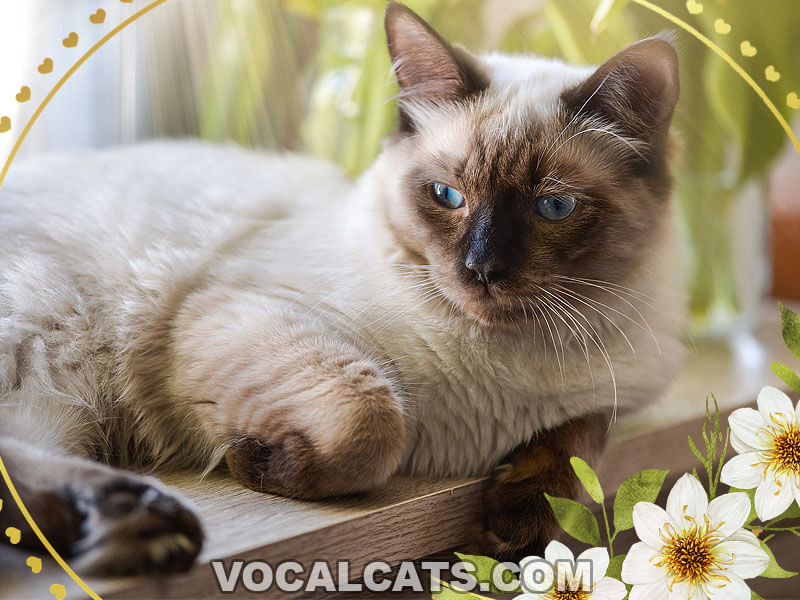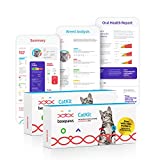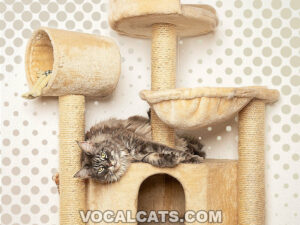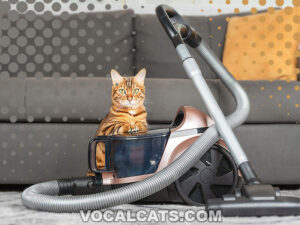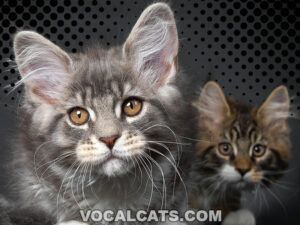Seal Lynx Ragdoll cats are unique among the Ragdoll species due to their unique looks. But that’s not all there is to recommend this pretty cat to feline enthusiasts. If you hope to bring home a Seal Lynx, our guide can help.
This article will focus on all there is this Ragdoll variation, including temperament, grooming, and diet. There’s also an entire section dedicated to explaining Seal Lynx coat colors!
If you’re on the lookout for a friendly feline with a stunning appearance, you can’t do much better than a Seal Lynx Ragdoll. That’s why we recommend reviewing our article to ensure this counterpart of the Seal Mitted Ragdoll suits your lifestyle.
Contents
- Seal Lynx Ragdoll: Breed overview
- What is a Seal Lynx Ragdoll?
- Seal Lynx Point Ragdoll: Parent breeds
- Is the Seal Lynx Point recognized by cat registries?
- Seal Point Lynx Ragdoll physical appearance
- Seal Point Lynx Cat size, height, and weight
- Various Seal Lynx Ragdoll coat colors and types
- Lynx Seal Ragdoll personality and temperament
- Do Seal Lynx Ragdolls make great family pets?
- Ragdoll Seal Lynx Point training
- Seal Lynx Point Ragdoll cat exercise requirement
- Seal Lynx Ragdoll Cat grooming and cleaning
- Do Seal Lynx Ragdolls shed a lot?
- Are Seal Lynx Ragdolls hypoallergenic?
- Seal Point Lynx Ragdoll Cat food and diet
- Seal Lynx Ragdoll common health issues
- Seal Lynx Ragdoll lifespan
- Seal Lynx Ragdoll breeders
- Seal Lynx Ragdoll kitten
- Seal Lynx Ragdoll price
- Places to find Seal Lynx Ragdoll kittens for sale
- Finding a healthy Seal Lynx Ragdoll for sale
- Seal Lynx Ragdoll: Pros and Cons
- Is the Seal Lynx Ragdoll right for me?
- Related Questions
Seal Lynx Ragdoll: Breed overview
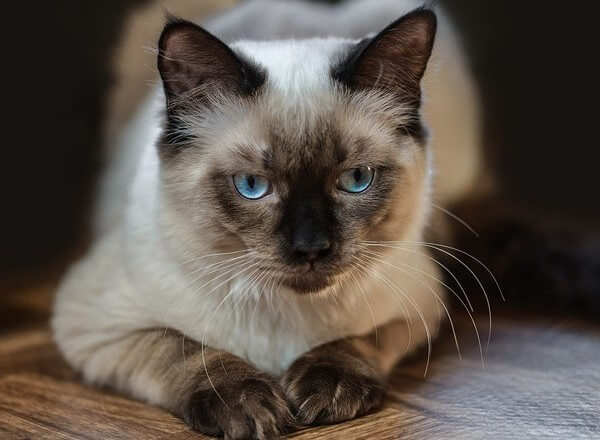
If you’re already a Ragdoll aficionado looking to brush up on your knowledge of the Seal Lynx Ragdoll, our overview report below can help.
| Common Names | Seal Lynx Point Ragdolls, Seal Lynx Points |
| Size | Large |
| Weight | 10-20 pounds |
| Height | 7-11 inches |
| Lifespan | 12-15 years |
| Colors | Cream or fawn base color, dark brown to light brown points. |
| Child Friendliness | High |
| Feline Friendliness | High |
| Training Difficulty | Low-to-Medium |
| Grooming Upkeep | High |
| Breed Health | Good |
| Exercise Needs | Medium |
| Kitten Costs | $800-$3,000 |
What is a Seal Lynx Ragdoll?
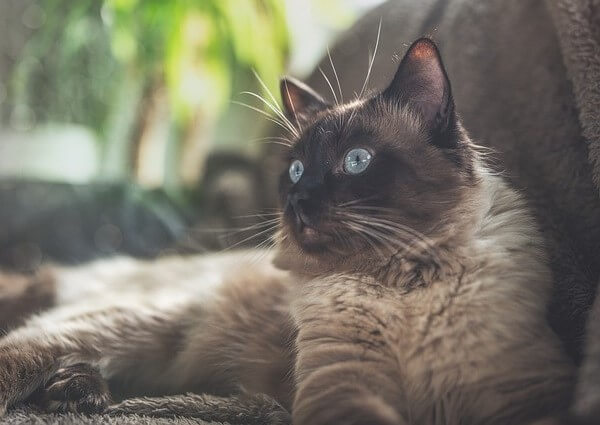
A Seal Lynx Ragdoll is a unique variation of the Ragdoll breed. These cats get their name due to the ‘tabby striping’ effect caused by the ‘agouti’ gene.
Additionally, they fall under the colorpoint pattern category because their ears, masks, paws, and legs tend to be darker in color than the rest of their body.
Seal Lynx Point Ragdoll: Parent breeds
The Seal Lynx Point Ragdoll is generally the result of the Agouti gene, which results in the ‘Lynx’ or ‘tabby’ effect.
If you’re unsure what that is, just think of lynx as a fancy term to describe light or faded stripes on a feline’s body, giving them a ‘wild’ appearance.
The tabby Agouti gene is dominant, meaning if a feline inherits the gene from both parents, it will have the lynx stripes. Naturally, mating two Ragdoll Seal Lynx cats means there’s a greater chance that all members of the resulting litter will acquire their parents’ coloring.
Since Seal Lynx cats aren’t hybrids or a distinct breed, they have Ragdoll cats as parents. The only difference is that because these felines have a specific coloring and pattern, their parents are typically both Seal Lynx cats too.
Ragdoll history
Ragdoll cats are a relatively new breed, first bred in the 60s by Ann Baker in Riverside, California. Experts agree that the Ragdoll breed was created by breeding a white Angora-like cat named Josephine with various other breeds, including a Birman and a Persian. Baker wanted to develop a feline breed that would suit families with kids.
CHECK OUT: Persian Ragdoll Cat (Complete Guide)
And she succeeded to quite an extent.
This breed is known for its laid-back personality. Ragdolls are often described as “puppy-like” because they love to follow their owners around and greet them at the door when they come home.
They’re also known for their striking blue eyes and long, plush coats, which require regular grooming.
DON’T MISS: Blue Eyed White Ragdoll (Complete Guide)
Is the Seal Lynx Point recognized by cat registries?
Yes, the Seal Lynx Point Ragdoll is recognized by cat registries like TICA and CFA. The logic behind this is simple.
As stated earlier, the Seal Lynx Point isn’t a hybrid but a variation based on color and pattern. The only thing that separates a Ragdoll Seal Point Lynx from a regular Seal Point Ragdoll is the ‘lynx’ effect or pattern caused by the Agouti gene.
Fun Question: Are Chocolate Ragdolls also recognized by CFA and TICA? Check out Chocolate Pointed Ragdoll (Complete Guide) to find out!
Seal Point Lynx Ragdoll physical appearance
Seal Lynx Ragdolls get their name thanks to their unique appearance. These cats sport the colorpoint pattern, meaning their faces, ears, feet, and tails can be darker than the rest of their body.
According to the breed standard, Seal Lynx felines are a light fawn or cream, with the color going lighter in the chest and belly areas. Their saddles (or backs) can include ghost striping (faded stripes).
The points of a Seal Lynx also feature brown lines (or bars) distinct from their lighter base color. Seal Point Lynx Ragdolls have the signature blue eyes of Ragdolls, seal brown (or pink-edged) nose leather, and seal brown paw pads.
You may be interested in: Cream Point Ragdoll (Complete Guide)
Seal Point Lynx Cat size, height, and weight
Now that you know what makes a Seal Point Lynx Cat distinct from a standard colorpoint Ragdoll, it’s time to learn about its dimensions. By that, we mean how big you can expect your feline to grow.
Scroll below to discover the table jotting down the difference in height, weight, and length in male and female Seal Lynx Points.
| Height | Weight | Length | |
| Male | 9-11 inches | 15-20 pounds | 19-21 inches |
| Female | 7-9 inches | 10-14 pounds | 17-19 inches |
Various Seal Lynx Ragdoll coat colors and types
As many colors and patterns, there are in the Ragdoll breed, you’d think the Lynx Seal Point Ragdoll would be one of a kind. But that’s not true. There is plenty of Seal Lynx Colorpoint Ragdoll variation too. Does that make sense?
Let’s put it like this. This section will help understand the range of colors and coat types in the Ragdoll Seal Lynx Colorpoint category.
Ready?
Seal Lynx Bicolor Ragdoll
Once you figure out how registries categorize colors and patterns, understanding what the term ‘Ragdoll Seal bicolor Lynx’ means becomes easier.
Seal is one of the six officially recognized colors of the Ragdoll breed. Conversely, lynx stands for a type of pattern, and so does colorpoint or just point.
However, the Seal Lynx bicolor is distinct from Seal Lynx Points because of the inverted ‘V’ shape within the outer edges of their eyes. Ragdoll Seal Lynx bicolor cats have white legs and feet and occasional white spotting on their upper bodies. And Ragdoll Seal Lynx bicolor also has pink paw pads and nose leather.
If you plan on getting a show cat, get a Seal Lynx bicolor Ragdoll kitten with the inverted ‘V’ on the mask. Another detail to remember about the Seal Lynx bicolor Ragdoll cat is that there shouldn’t be any dark spotting on the body or legs.
Besides that, Seal Lynx Point bicolor Ragdoll cats are similar to other Ragdolls in terms of caretaking. However, the Seal bicolor Lynx Ragdoll has a distinct look, not to be confused with the Seal Lynx Point.
Seal mink Lynx bicolor Ragdoll
The mink color (a light brown) is traced to the original Ragdolls that came about by mating a Burmese and a white Angora-like cat. The cb gene responsible for the mink coloring of the Seal mink Lynx bicolor Ragdoll comes from Burmese cats.
When Ragdolls inherit a cb gene from one parent and a cs gene (traced to Siamese cats) from the other, it will result in mink coloration.
You may also like: Siamese Ragdoll Cat (Ragamese Complete Guide)
You can expect Seal Mink Lynx Bicolors to have slightly darker points (ears, masks, feet, and tails) with a cream-colored body. The mink coloration also results in blue eyes.
Seal Lynx Mitted Ragdoll
A Seal Lynx Point mitted Ragdoll is much like a Seal Lynx, with the difference that it inherits the mitted pattern. Therefore, Seal mitted Lynx Ragdoll(s) have white or ‘mitted’ feet but very defined ears, masks, legs, and tails.
These cats also have a white blaze on the mask (face) between the top of the nose and forehead. The white mark of a Ragdoll Seal mitted Lynx must be symmetrical and centrally located.
Aside from that, you can expect a mitted Seal Lynx Ragdoll to have a white stripe extending from the chin to the belly area. The nose leather of a Seal Lynx mitted Ragdoll cat should match the point color, and their paw pads can be pink with some shading.
If you’re bringing home a Seal Lynx mitted Ragdoll kitten, it might take some time to develop its adult coat, but generally, the mink of a Seal mitted Lynx Ragdoll cat is present at birth. Finally, Ragdoll Seal Lynx mitted can also have the hallmark ghost stripes of the tabby pattern.
Seal Mitted Lynx mink Ragdoll
The Seal Mitted Lynx mink Ragdoll can look a lot like the Seal Lynx Mitted Ragdoll, the only difference being the mink coloration. These cats will have the trademark light brown hue of mink cats throughout Ragdoll history.
Seal mink Lynx Ragdoll
Seal Lynx Mink Ragdoll cats are different from others in the Seal Lynx category in that they don’t have any white overlaid in the points. Therefore, a Seal mink Lynx Ragdoll will inherit the dual coloration of seal and mink with a lighter base coat. And their points will be entirely dark, along with a lynx pattern on their bodies.
Seal tortie Lynx Point Ragdoll
The word tortie in the Ragdoll breed describes a coat resembling a tortoise’s mottled shell. A Seal tortie Lynx Ragdoll will generally have a cream base color, shading, and light color around the belly and chest. Their points are typically seal with cream or red mottling.
Seal Lynx tabby Ragdoll
Seal Lynx tabby Ragdoll look a lot like Seal Lynx Points, but they have the famous ‘M’ shape on their foreheads and a light liner around the eyes.
Seal sepia Lynx Ragdoll
Seal sepia Lynx Ragdolls cats are like Seal Lynx Points but have a darker brown coloring than the mink shade.
READ NEXT: Sepia Ragdoll (Complete Guide)
Lynx Seal Ragdoll personality and temperament
One of the most striking qualities of Lynx Seal Ragdoll(s) is their calm and gentle nature. They are known for being affectionate and social cats who love spending time with their owners.
Lynx Seals are also intelligent and playful, making them an ideal pet for families with children. They are easy to train and respond well to positive reinforcement.
Further, Lynx Seal Ragdolls are typically vocal and like communicating with their owners through a range of meows and purrs.
Do Seal Lynx Ragdolls make great family pets?
When it comes to choosing a family-friendly cat, you can’t do better than Seal Lynx Ragdolls. The Ragdoll breed is famous for its loving temperament. It’s not uncommon for a Seal Lynx to cuddle up in its owner’s lap for a nap.
These cats love to be around people and like staying in the same room as their humans. Moreover, Lynx Seal Ragdolls are great with children because they are patient and tolerant.
Ragdolls aren’t particularly active but enjoy playing and interacting with their owners. Finally, they’re not aggressive, so you don’t have to worry about fights breaking out between house pets.
Ragdoll Seal Lynx Point training
A Ragdoll Seal Lynx Point isn’t too challenging regarding training. Litter-training most cats is easy, as they have an instinct for it. But you must introduce your cat to the litter before and after meals until it gets the hang of things.
Another critical aspect of training your Ragdoll Seal Lynx Point is socialization. These cats are typically amiable and enjoy the company of humans and other pets. However, they still need to be exposed to various people, animals, and environments to stay well-adjusted.
Seal Lynx Point Ragdoll cat exercise requirement
One of the best things about keeping felines as pets is that they have negligible exercise requirements. However, that doesn’t mean you should leave your Seal Lynx Point Ragdoll cat to its devices all the time.
As a cat parent, you need to take out about 15-20 minutes throughout the day to play with your pet. You can break up the exercise time into 5-minute episodes during the day and use interactive toys to keep your feline occupied.
This will help your kitty burn off excess energy, avoid late-night zoomies, and keep your fur baby healthy.
CHECK OUT: Why Does My Cat Look Out The Window At Night?
Seal Lynx Ragdoll Cat grooming and cleaning
If you’re wondering about the grooming needs of a Seal Lynx Ragdoll Cat, you might want to pay attention here.
Grooming felines include hair brushing, bathing, nail trimming, dental care, and ear and eye cleaning. In other words, you’ll have to do all of the above when your Seal Lynx Point finally arrives home.
READ ALSO: Do Ragdoll Cats Like Water?
Scroll below to the grooming table to understand how frequently you must do each assignment.
| Grooming Technique | Frequency |
| Hair Brushing | Thrice a week for 5 to 15 minutes. |
| Bathing | Once every 4-6 weeks or as required. |
| Nail Trimming | Every 2 weeks or as required. |
| Teeth Brushing | Dental chews daily or brushing 3x per week. |
| Eye Care | Gently wipe to remove crust daily or as needed. |
| Ear Care | Wipe outer ears as needed. |
Do Seal Lynx Ragdolls shed a lot?
Seal Lynx Ragdolls are long-haired felines which means they experience moderate-to-high shedding. Although, owners should note that how much your Ragdoll will shed depends on diet, seasons, and your kitty’s grooming schedule.
Regularly brushing your cat’s coat, using a deshedding shampoo (with feline-friendly ingredients), and feeding your pet a healthy diet can all help control the shedding.
Moreover, you can also invest in a vacuum cleaner with a HEPA filter to keep the fur off your upholstery and floors. HEPA filters are also highly adept at picking up pet dander which tends to trigger allergies.
WANT MORE INFORMATION? Check out Do Ragdoll Cats Shed? 7 Ways To Shed Less!
Are Seal Lynx Ragdolls hypoallergenic?
Seal Lynx Point Ragdolls are not hypoallergenic. They’re long-haired felines who experience a fair amount of shedding.
Although, if you’re a Ragdoll enthusiast with easily-triggered allergies, you can always buy air purifiers with HEPA filter for your bedroom and living room to reduce dander and other allergenic airborne particles.
RECOMMENDED: Do Ragdoll Cats Sneeze A Lot? 15 Reasons & How To Help
Seal Point Lynx Ragdoll Cat food and diet
It is crucial to provide your Seal Point Lynx Ragdoll Cat with a well-balanced meal that meets its nutritional requirements. These cats are known for their sizeable dimensions and can weigh up to 20 pounds.
They have a somewhat slow metabolism, which means they can quickly become overweight if not fed the right food in the proper quantities. High-quality dry kibble or wet food with a protein content of at least 30% is recommended.
It is also important to avoid feeding them table scraps as it can upset their stomachs or lead to health problems in the long run.
Overfeeding can cause obesity and various health issues, including heart disease, diabetes, and joint problems. Therefore, experts suggest several small meals throughout the day instead of one or two large ones.
RECOMMENDED: Can Cats Eat Sardines? (Canned, Raw, Dried, Oil)
Seal Lynx Ragdoll common health issues
While Seal Lynx Points are generally healthy cats, a few common health issues can affect them. If you would like to know what health issues your Seal Lynx Ragdoll may be predisposed to, using a cat DNA test kit can help.
Many cat owners say that using a cat DNA test kit is like unlocking a treasure trove of information about their feline friends.
Not only does it reveal your cat’s exact breed, but it can also provide crucial insights into their health. By identifying potential genetic diseases your furry companion might be predisposed to, you’ll be better equipped to provide the best possible care for them.
Knowledge is power, and with these test results, you can work with your vet to create a preventative health plan, possibly avoiding certain conditions before they become a problem.
In this way, a cat DNA test kit is not just a tool for curiosity, but a practical step towards ensuring the health and happiness of your precious fuzzy family member.
In the meantime, here are some of them that pet parents should be aware of.
Hypertrophic Cardiomyopathy (HCM)
HCM is a genetic heart disease affecting many cat breeds, including the Seal Lynx Ragdoll. The condition causes the heart walls to thicken, which causes problems in pumping blood. Complications can lead to heart failure, blood clots, and sudden death. If you own a Seal Lynx, having it screened for HCM is essential.
Feline Infectious Peritonitis (FIP)
FIP is caused by a coronavirus that attacks a cat’s immune system, leading to inflammation in various organs. The symptoms of Feline Infectious Peritonitis can vary, but they often include fever, weight loss, and lethargy.
There is no cure for FIP, so prevention is vital. Ensuring your Seal Lynx is up-to-date on its vaccinations and keeping them away from outdoor felines can help.
Dental Disease
Plaque and tartar buildup can lead to gum disease, tooth decay, and even tooth loss. You’ll have to look after your feline’s oral health by brushing its teeth. Cat parents can also rely on dental treats and chew toys designed to promote dental health.
Obesity
Seal Lynx Ragdolls are prone to obesity. Unwanted weight gain can lead to various health problems, including diabetes, joint concerns, and heart disease. You can keep your kitty from going overweight by looking after its diet, food portions, and exercise.
Seal Lynx Ragdoll lifespan
The average lifespan of a Seal Lynx Ragdoll cat can change depending on several factors, such as diet, exercise, and genetics. Generally, Ragdolls have a life expectancy of 12 to 15 years, but some can live up to 20 years with proper care.
Seal Lynx Ragdoll breeders
Experts generally advise reaching out to breeders to get a Seal Lynx Point Ragdoll, instead of referring to ads or pet stores. If you’re hoping to get a healthy kitten, without genetic disorders, or other inherited health problems, breeders are the best option.
Reputed breeders not only follow ethical care and raising standards, but they’re also meticulous about bloodlines, DNA testing, and early vaccinations. If you bring home a pet from a breeder with a health guarantee, you have a better shot at acquiring a healthy pet.
Seal Lynx Ragdoll kitten
Bringing home a Seal Lynx Point Ragdoll kitten is an exciting prospect. These adorable fur babies are loving, playful, and oodles of fun. But, Seal Lynx Point Ragdoll kittens require lots of care and looking after too.
It’s important to have everything ready for your Seal Point Lynx Ragdoll kitten before you bring it home. This includes kitten-proofing your home and having your pet’s bed, food, and water bowls, and of course, a litter tray ready.
Aside from that, it’s imperative to keep your kitten indoors until its early vaccinations are completed to ensure it doesn’t contract any illness.
Seal Lynx Ragdoll price
Ragdolls can cost anywhere from $800 to $3,000 depending on their color, bloodlines, availability, and breeder. Prices may also fluctuate depending on location and other variables.
Places to find Seal Lynx Ragdoll kittens for sale
Are you having trouble finding Seal Lynx Ragdoll kittens for sale? If yes, this section can help. We’ve compiled a list of reputable breeders below you can use as a starting point on your kitten search.
Midwest Ragdolls (midwestragdolls.com)
Dr. Jennifer Creed, a licensed veterinarian, operates Midwest Ragdolls. This breeder specializes in Seal Points and Seal Lynx Point Ragdolls.
Rustic Ragdolls (rusticragdolls.com/available-kittens)
This breeding operation is run by Dr. Amy Klauer and is based in Iowa. They’re Ragdoll specialists and can create most Ragdoll colors, including Seal, Lynx, and Tortie.
East Coast Ragdolls (eastcoastragdolls.com)
Another great option for pet parents looking for Seal Lynx Point Ragdoll kittens for sale is East Coast Ragdolls. Not only are these breeders TICA registered, but they also have a wide variety of Seal Lynx cats and kittens.
Finding a healthy Seal Lynx Ragdoll for sale
If your heart is set on finding an adult Ragdoll, have no fear. This section includes breeders with retired dams and sires looking for their forever homes. Scroll below to discover adult Seal Lynx Ragdoll for sale.
DreamCatcher Ragdolls (dreamcatcherragdolls.com/home/)
Based in Florida, DreamCatcher is a boutique Ragdoll cattery with a wide range of retired Seal Ragdolls you can choose from!
My Ragdoll Heaven (myragdollheaven.com/our-kings/)
My Ragdoll Heaven is another TICA-registered cattery with 15 years of experience in the breeding business. And, the best part is, they also have adult Ragdolls for adoption.
Seal Lynx Ragdoll: Pros and Cons
It can be a little daunting bringing home a pet for the first time. If you’re having difficulties making up your mind, here’s a pros and cons table to help you reach an informed decision.
| Pros | Cons |
| Gentle | Prone to illnesses |
| Playful | High initial costs |
| Loving | Not hypoallergenic |
| People-friendly | Must be kept indoors |
| Good with pets | May be prone to separation anxiety |
| Child-friendly | Prone to certain illnesses |
Is the Seal Lynx Ragdoll right for me?
Ragdolls are known for their docile and easy-going temperament, which makes them ideal pets for families with children or other pets. The Seal Lynx variety is a beautiful and unique type of Ragdoll with blue eyes and a light-colored coat with dark spots.
However, before you adopt a Seal Lynx Point Ragdoll, it is essential to consider their grooming needs, as they require regular brushing and grooming to maintain their long, silky coat. Additionally, Ragdolls are indoor cats, and they prefer having company, so if you have a busy schedule this breed might not be the best fit for you.
Related Questions
Lynx Ragdolls are pricier than the Mitted and Bicolor varieties. However, they’re less expensive than Torties. The price range of Seal Lynx Points can clock in anywhere between $1,300 and $3,000.
The rarest type of Ragdoll is cream-colored variety. Only an estimated three percent of Ragdoll owners have Cream Ragdolls.
Since Lynx Point Ragdolls aren’t a variation or hybrid, their weight bracket is the same as regular Ragdolls. That means, Lynx Points can weigh anywhere between 10 to 20 pounds.
DISCLAIMER: THIS WEBSITE DOES NOT PROVIDE MEDICAL ADVICE
The information, including but not limited to, text, graphics, images and other material contained on this website are for informational purposes only. No material on this site is intended to be a substitute for professional veterinary advice, diagnosis, or treatment. Always seek the advice of your veterinarian or other qualified health care provider with any questions you may have regarding a medical condition.
Resources:
https://en.wikipedia.org/wiki/Ragdoll
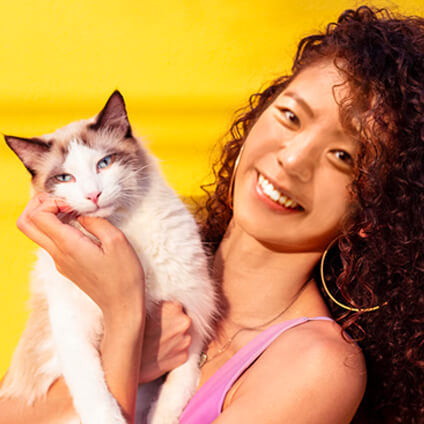
With over five years of specialized experience as an animal writer, my expertise lies in cat nutrition, health, behavior, grooming, and training. I am dedicated to delivering helpful and informative content that caters to the well-being of our feline friends. My primary goal is to empower pet owners with knowledge and ensure our feline companions thrive in health and happiness. In my free time, I love volunteering at local cat rescue centers.
